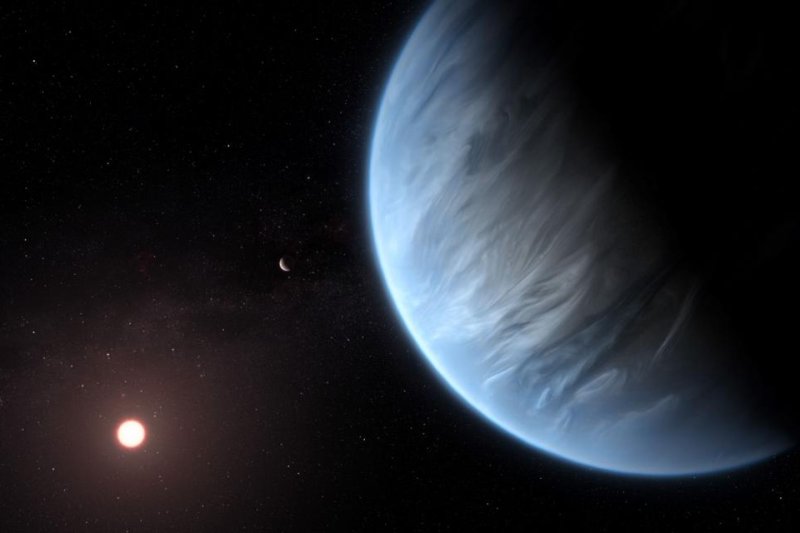An illustration showcases a watery world orbiting within its host star's habitable zone. Photo by UCL
Sept. 11 (UPI) -- For the first time, scientists have detected water in the atmosphere of an exoplanet positioned within its host star's habitable zone.
The exoplanet K2-18b, which is located 110 light-years from Earth, completes an orbit around the red dwarf star K2-18 every 33 days. New analysis suggests the planet -- featuring a mass eight times that of Earth -- hosts both water and moderate temperatures.
"Finding water in a potentially habitable world other than Earth is incredibly exciting," Angelos Tsiaras, a planetary scientist at the University College London, said in a news release. "K2-18b is not 'Earth 2.0' as it is significantly heavier and has a different atmospheric composition. However, it brings us closer to answering the fundamental question: Is the Earth unique?"
The habitable zone is the area surrounding a star in which liquid water can exist on an orbiting exoplanet, thus presenting the possibility for life. The zone's dimensions are defined by the size and strength of the star. An exoplanet in the habitable zone is far enough from its sun that water isn't boiled away, but close enough that it isn't perpetually frozen.
Scientists found the spectral signal produced by water vapor molecules while studying observations of the exoplanet captured by the Hubble Space Telescope in 2016 and 2017.
Though K2-18b is positioned quite close to its host star, it doesn't get too hot, as K2-18 is a relatively cool star. However, the star hosts significant radioactivity. Exposure to radiation would make life on K2-18b rather harsh, but not impossible.
Researchers hope followup observations will offer additional clues as to how habitable K2-18 is. Scientists suspect the exoplanet also hosts nitrogen and methane, but they were unable to identify the chemical's signatures in the spectral data.
Astronomers shared their analysis of K2-18b this week in the journal Nature Astronomy.
"Our discovery makes K2-18b one of the most interesting targets for future study. Over 4,000 exoplanets have been detected but we don't know much about their composition and nature," said UCL astrophysicist Giovanna Tinetti. "By observing a large sample of planets, we hope to reveal secrets about their chemistry, formation and evolution."















